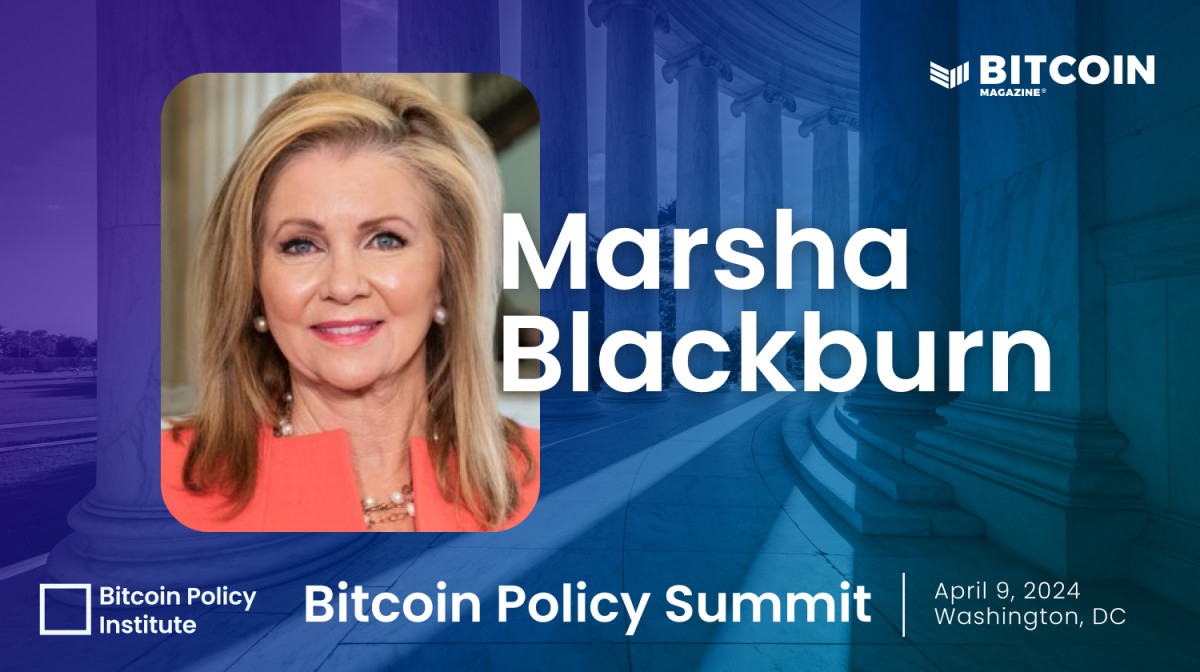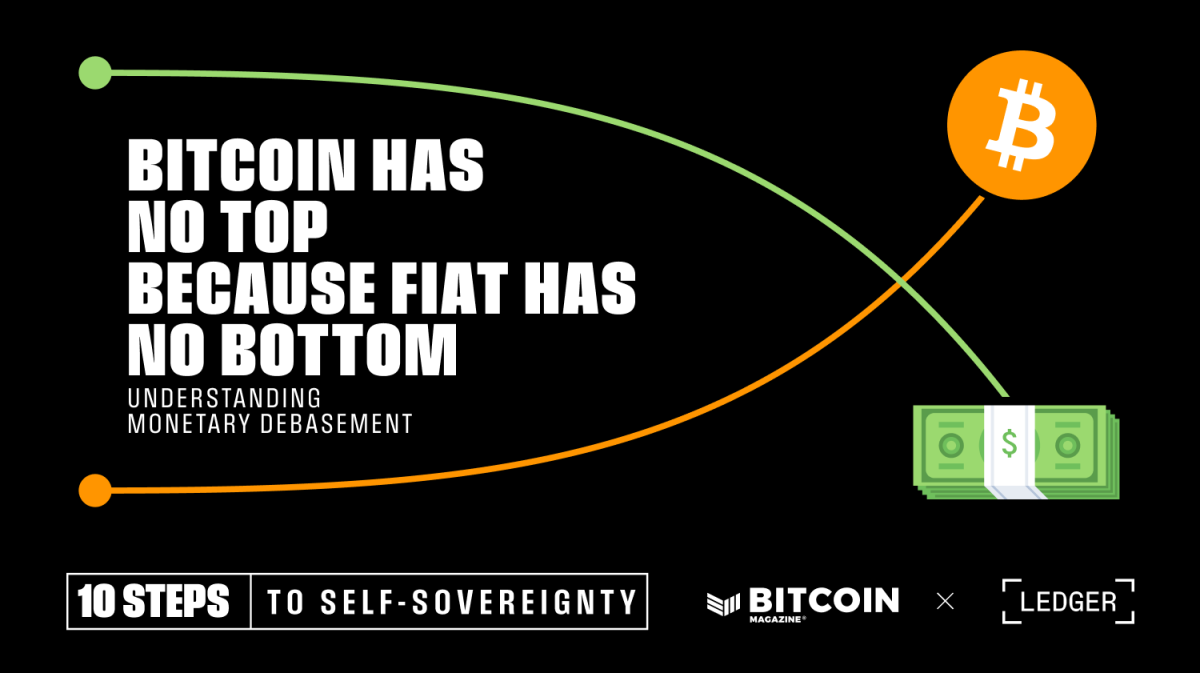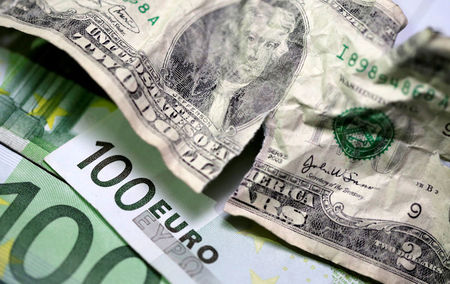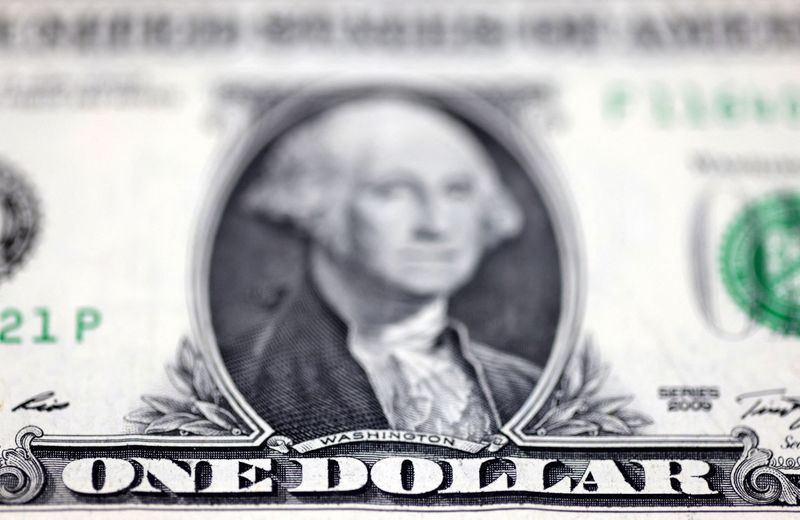Month: March 2024
Your financial plan may be riskier without bitcoin
This article originally appeared in the Sound Advisory blog. Sound Advisory provide financial advisory services and are specialize in educating and guiding clients to thrive financially in a bitcoin-powered world. Click here to learn more.
“Belief is a wise wager. Granted that faith cannot be proved, what harm will come to you if you gamble on its truth and it proves false? If you gain, you gain all; if you lose, you lose nothing. Wager, then, without hesitation, that He exists.”
– Blaise Pascal
Blaise Pascal only lived to age 39 but became world-famous for many contributions in the fields of mathematics, physics, and theology. The above quote encapsulates Pascal’s wager—a philosophical argument for the Christian belief in the existence of God.
The argument’s conclusion states that a rational person should live as though God exists. Even if the probability is low, the reward is worth the risk.
Pascal’s wager as a justification for bitcoin? Yes, I’m aware of the fallacies: false dichotomy, appeal to emotion, begging the question, etc. That is not the point. The point is that binary outcomes instigate extreme results, and the game theory of money suggests that it’s a winner-take-all game.
The Pascalian investor: A rational approach to bitcoin
Humanity’s adoption of “the best money over time” mimics a series of binary outcomes—A/B tests.
Throughout history, inferior forms of money have faded as better alternatives emerged (see India’s failed transition to a gold standard). And if bitcoin is trying to be the premier money of the future, it will either succeed or it won’t.
“If you ain’t first, you’re last.” -Ricky Bobby, Talladega Nights, on which monies succeed over time.
So, we can look at bitcoin success similarly to Pascal’s wager—let’s call it Satoshi’s wager. The translated points would go something like this:
If you own bitcoin early and it becomes a globally valuable money, you gain immensely. 😀If you own bitcoin and it fails, you’ve lost that value. 😢If you don’t own bitcoin and it goes to zero, no pain and no gain. 😐 If you don’t own bitcoin and it succeeds, you will have missed out on the significant financial revolution of our lifetimes and fall comparatively behind. 😡
If bitcoin is successful, it will be worth far more than it is today and have a massive impact on your financial future. If it fails, the losses are only limited to your exposure. The most that you could lose is the money that you invested.
It is hypothetically possible that bitcoin could be worth 100x more than it is today, but it can only possibly lose 1x its value as it goes to zero. The concept we’re discussing here is asymmetric upside – significant gains with relatively limited downside. In other words, the potential rewards of the investment outweigh the potential risks.
Bitcoin offers an asymmetric upside that makes it a wise investment for most portfolios. Even a small allocation provides potential protection against extreme currency debasement.
Salt, gasoline, and insurance
“Don’t over salt your steak, pour too much gas on the fire, or buy too much insurance.”
A little bit goes a long way, and you can easily overdo it. The same applies when looking at bitcoin in the context of a financial plan.
Bitcoin’s asymmetric upside gives it “insurance-like” qualities, and that insurance pays off very well in times of money printing. This was exemplified in 2020 when bitcoin’s value increased over 300% in response to pandemic money printing, far outpacing stocks, gold, and bonds.
Bitcoin offers a similar asymmetric upside today. Bitcoin’s supply is capped at 21 million coins, making it resistant to inflationary debasement. In contrast, the dollar’s purchasing power consistently declines through unrestrained money printing. History has shown that societies prefer money that is hard to inflate.
If recent rampant inflation is uncontainable and the dollar system falters, bitcoin is well-positioned as a successor. This global monetary A/B test is still early, but given their respective sizes, a little bitcoin can go a long way. If it succeeds, early adopters will benefit enormously compared to latecomers. Of course, there are no guarantees, but the potential reward justifies reasonable exposure despite the risks.
Let’s imagine Nervous Nancy, an extremely conservative investor. She wants to invest but also take the least risk possible. She invests 100% of her money in short-term cash equivalents (short-term treasuries, money markets, CDs, maybe some cash in the coffee can). With this investment allocation, she’s nearly certain to get her initial investment back and receive a modest amount of interest as a gain. However, she has no guarantees that the investment returned to her will purchase the same amount as it used to. Inflation and money printing cause each dollar to be able to purchase less and less over time. Depending on the severity of the inflation, it might not buy anything at all. In other words, she didn’t lose any dollars, but the dollar lost purchasing power.
Now, let’s salt her portfolio with bitcoin.
99% short-term treasuries. 1% bitcoin.
With a 1% allocation, if bitcoin goes to zero overnight, she’ll have only lost a penny on the dollar, and her treasury interest will quickly fill the gap. Not at all catastrophic to her financial future.
However, if the hypothetical hyperinflationary scenario from above plays out and bitcoin grows 100x in purchasing power, she’s saved everything. Metaphorically, her entire dollar house burned down, and “bitcoin insurance” made her whole. Powerful. A little bitcoin salt goes a long way.
(When protecting against the existing system, it’s important to remember that you need to get your bitcoin out of the system. Keeping bitcoin on an exchange or with a counterparty will do you no good if that entity fails. If you view bitcoin as insurance, it’s essential to keep your bitcoin in cold storage and hold your keys. Otherwise, it’s someone else’s insurance.)
When all you have a hammer, everything looks like a…
A construction joke:
There are only three rules to construction: 1.) Always use the right tool for the job! 2.) A hammer is always the right tool! 3.) Anything can be a hammer!
Yeah. That’s what I thought, too. Slightly funny and mostly useless.
But if you spend enough time swinging a hammer, you’ll eventually realize it can be more than it first appears. Not everything is a nail. A hammer can tear down walls, break concrete, tap objects into place, and wiggle other things out. A hammer can create and destroy; it builds tall towers and humbles novice fingers. The use cases expand with the skill of the carpenter.
Like hammers, bitcoin is a monetary tool. And a 1-5% allocator to the asset typically sees a “speculative insurance” use case – valid. Bitcoin is speculative insurance, but it is not only speculative insurance. People invest and save in bitcoin for many different reasons.
I’ve seen people use bitcoin to pursue all of the following use cases:
Hedging against a financial collapse (speculative insurance)Saving for family and future (long-term general savings and safety net)Growing a downpayment for a house (medium-term specific savings)Shooting for the moon in a manner equivalent to winning the lottery (gambling)Opting out of government-run, bank-controlled financial systems (financial optionality)Making a quick buck (short-term trading)Escaping a hostile country (wealth evacuation)Locking away wealth that can’t be confiscated (wealth preservation)As a means to influence opinions and gain followers (social status)Fix the money and fix the world (mission and purpose)
Keep this in mind when taking other people’s financial advice. They are often playing a different game than you. They have different goals, upbringings, worldviews, family dynamics, and circumstances. Even though they might use the same hammer as you, it could be for a completely different job.
Wrapping Up
A massive allocation to bitcoin may seem crazy to some people, yet perfectly reasonable to others. The same goes for having a 1% allocation.
But, given today’s macroeconomic environment and bitcoin’s trajectory, I find very few use cases where 0% bitcoin makes sense. By not owning bitcoin, you implicitly say that you are 100% certain it will fail and go to zero. Given its 14-year history so far, I’d recommend reducing your confidence. Nobody is 100% right forever. A little salt goes a long way. Your financial plan may be riskier without bitcoin. Diversify accordingly.
“We must learn our limits. We are all something, but none of us are everything.” – Blaise Pascal.
Contact
Office: (208)-254-0142
Ste. 205
Eagle, ID 83616
Check the background of your financial professional on FINRA’s BrokerCheck.The content is developed from sources believed to be providing accurate information. The information in this material is not intended as tax or legal advice. Please consult legal or tax professionals for specific information regarding your individual situation. Some of this material was developed and produced by FMG Suite to provide information on a topic that may be of interest. FMG Suite is not affiliated with the named representative, broker – dealer, state – or SEC – registered investment advisory firm. The opinions expressed and material provided are for general information, and should not be considered a solicitation for the purchase or sale of any security.
We take protecting your data and privacy very seriously. As of January 1, 2020 the California Consumer Privacy Act (CCPA) suggests the following link as an extra measure to safeguard your data: Do not sell my personal information.
Copyright 2024 FMG Suite.
Sound Advisory, LLC (“SA”) is a registered investment advisor offering advisory services in the State of Idaho and in other jurisdictions where exempt. Registration does not imply a certain level of skill or training. The information on this site is not intended as tax, accounting, or legal advice, as an offer or solicitation of an offer to buy or sell, or as an endorsement of any company, security, fund, or other securities or non-securities offering. This information should not be relied upon as the sole factor in an investment-making decision. Past performance is no indication of future results. Investment in securities involves significant risk and has the potential for partial or complete loss of funds invested. It should not be assumed that any recommendations made will be profitable or equal any performance noted on this site.
The information on this site is provided “AS IS” and without warranties of any kind, either express or implied. To the fullest extent permissible pursuant to applicable laws, Sound Advisory LLC disclaims all warranties, express or implied, including, but not limited to, implied warranties of merchantability, non-infringement, and suitability for a particular purpose.
SA does not warrant that the information on this site will be free from error. Your use of the information is at your sole risk. Under no circumstances shall SA be liable for any direct, indirect, special or consequential damages that result from the use of, or the inability to use, the information provided on this site, even if SA or an SA authorized representative has been advised of the possibility of such damages. Information contained on this site should not be considered a solicitation to buy, an offer to sell, or a recommendation of any security in any jurisdiction where such offer, solicitation, or recommendation would be unlawful or unauthorized.
Stabilizing Forces: How Bitcoin ETF Inflows Counter Price Volatility
Eleven approved Bitcoin ETFs have painted the pioneering cryptocurrency with a fresh coat of legitimacy. By receiving an official blessing from the Securities and Exchange Commission (SEC), an institutional investing barrier has been lifted.
With this barrier gone, financial advisors, mutual funds, pension funds, insurance companies and retail investors can now receive Bitcoin exposure without hassling with direct custodianship. More importantly, a taint has been scrubbed off from Bitcoin, previously likened to “tulip mania”, “rat poison”, or “index of money laundering”.
Following the unprecedented domino of crypto bankruptcies throughout 2022, Bitcoin price reverted to November 2020 level of $15.7k by the end of that year. After that great FUD reservoir was drained, Bitcoin slowly recovered during 2023 and entered 2024 at $45k level, first visited in February 2021.
With the 4th Bitcoin halving ahead in April, and with ETFs setting new market dynamics, what should Bitcoin investors expect next? To determine that, one must understand how Bitcoin ETFs elevated BTC trading volume, effectively stabilizing Bitcoin’s price volatility.
Understanding Bitcoin ETFs and Market Dynamics
Bitcoin itself represents the democratization of money. Not beholden to central authority like the Federal Reserve, Bitcoin’s decentralized network of miners and algorithmically determined monetary policy ensures that its limited 21 million coin supply can’t be tampered with.
For BTC investors, this means they can be exposed to an asset that is not on an inherent trajectory of devaluation, which is in stark contrast to all existing fiat currencies in the world. This is the foundation for Bitcoin’s perception of value.
Exchange-traded funds (ETFs) present another democratization pathway. The purpose of ETFs is to track an asset’s price, represented by shares, and enable trading throughout the day unlike actively managed mutual funds. The ETFs’ passive price tracking ensures lower fees, making it an accessible investment vehicle.
Of course, it would be up to Bitcoin custodians like Coinbase to enact sufficient cloud security to instill investor confidence.
In the ETF universe, Bitcoin ETFs have demonstrated high demand for a decentralized asset that is resistant to centralized dilution. Altogether in the last 15 days, they have resulted in $29.3 billion trading volume against $14.9 billion pressure from Grayscale Bitcoin Trust BTC (GBTC).
Image credit: Bloomberg Intelligence via James Seyffart
This is not surprising. As Bitcoin price moved up due to Bitcoin ETF hype, 88% of all Bitcoin holders entered the profit zone in December 2023, eventually reaching 90% in February. In turn, GBTC investors were cashing out, placing a downward pressure worth $5.6 billion on Bitcoin price.
Moreover, GBTC investors took advantage of lower fees from the newly approved Bitcoin ETFs, shifting funds from GBTC’s relatively high 1.50% fee. At the end of the day, BlackRock’s iShares Bitcoin Trust (IBIT) is the volume winner at 0.12% fee, which will go up to 0.25% after a 12-month waiver period.
To place this in the context of the wider ETF universe, IBIT and FBTC managed to outpace iShares Climate Conscious & Transition MSCI USA ETF (USCL), launched in June 2023, within a month of trading.
Image credit: Bloomberg Intelligence via Eric Balchunas
This is particularly indicative given that Bitcoin’s history is one of attacks coming from the sustainability direction. It bears reminding that Bitcoin price fell 12%, in May 2021, shortly after Elon Musk tweeted that Tesla no longer accepts BTC payments precisely due to eco concerns.
During January, IBIT and FBTC found themselves at 8th and 10th place respectively as ETFs with the largest net asset inflows, headed by iShares Core S&P 500 ETF (IVV), according to Morning Star report. With daily ~10,000 BTC streaming into ETFs, this represents a greatly lopsided demand over ~900 BTC mined per day.
Moving forward, as the GBTC outflow pressure wanes and inflow trend increases, the steady stream of funds into Bitcoin ETFs is poised to stabilize BTC price.
The Mechanism of Stabilization
With 90% of Bitcoin holders entering the profit zone, highest since October 2021, selloff pressures can come from many sources, institutional, miner and retail. The higher inflow trend in Bitcoin ETFs is the bulwark against it, especially heading into another hype event – 4th Bitcoin halving.
Higher trading volumes generate higher liquidity, smoothing out price movements. That’s because larger volumes between both buyers and sellers absorb temporary imbalances. During January, CoinShares’ report showed $1.4 billion of Bitcoin inflows, together with $7.2 billion from newly issued US-based funds, against the GBTC outflows of $5.6 billion.
At $1.4 billion, Bitcoin represents 96% of total flows in the US. Image credit: CoinShares
In the meantime, large financial institutions are setting new liquidity baselines. As of February 6th, Fidelity Canada set up 1% Bitcoin allocation within its All-in-One Conservative ETF Fund. Given its “conservative” moniker, this signals even greater percentage allocations in future non-conservative funds.
Ultimately, if Bitcoin taps into 1% of the $749.2 trillion market pool of various asset classes, Bitcoin’s market cap could grow to $7.4 trillion, bringing Bitcoin price to $400k.
Bitcoin’s current market cap is within $0.85 – $0.9 billion range. Image credit: Blockware Solutions
Given that Bitcoin ETFs provide a consistent and transparent market price reference point, large aggregated trades reduce market impact on potential selloffs coming from miners. This is visible from FalconX Research, showing a great uptick in daily aggregate volumes, previously from average 5% heading into the 10 – 13% range.
In other words, the new Bitcoin ETF-induced market regime is reducing overall market volatility. So far, Bitcoin miners have been the main price-suppressing driver on the other side of the liquidity equation. In Bitfinex’s latest weekly on-chain report, miner wallets were responsible for 10,200 BTC in outflows.
This matches the aforementioned ~10,000 BTC inflows in Bitcoin ETFs, resulting in relatively stable price levels. As miners reinvest and upgrade mining rigs ahead of the 4th halving, another stabilizing mechanism could come into play – options.
Although the SEC is yet to approve options on spot-traded BTC ETFs, this development will further expand ETF liquidity. After all, the greater spectrum of investing strategies revolving around hedging increases liquidity on both sides of the trade.
As a forward-looking metric, implied volatility in options trading gauges market sentiment. But the greater market maturity that we will inevitably see following the introduction of BTC ETFs, we’re more likely to see a more stabilized pricing of options and derivative contracts in general.
Analyzing Inflows and Market Sentiment
As of February 9th, Grayscale Bitcoin Trust ETF (GBTC) holds 468,786 BTC. Over the last week, the BTC price went up 8.6% to $46.2k. Concurrent with the previous forecast, this means that BTC dumping is likely to spread out over multiple rallies ahead of the 4th halving and beyond.
By latest numbers provided by Farside Investors, as of February 8th, Bitcoin ETFs have racked up $403 million inflows, totaling to $2.1 billion. GBTC outflows totaled $6.3 billion.
Image credit: Farside Investors
From January 11th to February 8th, GBTC outflows have steadily decreased. Within the first week, they averaged $492 million. In the second week, GBTC outflows averaged $313 million, ending in $115 million on average during the third week.
Source: Farside Investors, image credit: Bitcoin Magazine
On a weekly basis, this represents a 36% reduction on sell pressure from week one to two, and 63% reduction from week two to three.
As GBTC FUD unfolded up to February 9th, crypto fear & greed index elevated to “greed” at 72 points. This represents a revisit to January 12th, at 71 points, just a few days after Bitcoin ETF approvals.
Looking ahead, it bears noticing that Bitcoin price is reliant on global liquidity. After all, it was the Fed’s interest rate hiking cycle in March 2022 that caused the avalanche of crypto bankruptcies, culminating in the FTX collapse. Current fed fund futures project the end of that cycle either in May or in June.
Moreover, it is extremely unlikely that the Federal Reserve will veer off the money printing course. And at such occasions, Bitcoin price followed suit.
M2 money supply measures how much money is available in an economy. Image credit: LookIntoBitcoin.com
Considering the insurmountable national debt of $34 trillion, while the federal spending keeps outpacing revenue, Bitcoin is positioning itself as a safe haven asset. One that waits for capital inflows into its limited 21 million coin supply.
Historical Context and Future Implications
As a similar safe haven asset, Gold Bullion Securities (GBS) launched as the first gold ETF in March 2003 on the Australian Securities Exchange (ASX). Next year, SPDR Gold Shares (GLD) launched on the New York Stock Exchange (NYSE).
Within a week from November 18th, 2004, GLD’s total net assets rose up from $114,920,000 to $1,456,602,906. By the end of December, this decreased to $1,327,960,347. To reach BlackRock’s IBIT market value of $3.5 billion, it took GLD up to November 22nd 2005.
Although not inflation-adjusted, this indicates Bitcoin’s superior market sentiment compared to gold. Bitcoin is digital, yet it is grounded in a proof-of-work mining network spanning the globe. Its digital nature translates to portability which can not be said of gold.
The USG showcased this point when President Roosevelt issued Executive Order 6102 in 1933 for citizens to sell their gold bullions. Likewise, new gold veins are frequently discovered which dampens its limited supply status in contrast to Bitcoin.
In addition to these fundamentals, Bitcoin ETF options are yet to materialize. Nonetheless, Standard Chartered analysts project $50 to $100 billion in Bitcoin ETFs by the end of 2024. Moreover, large companies are yet to follow MicroStrategy’s lead by effectively converting shares sales into a depreciating asset.
Even 1% BTC allocations across mutual funds are poised to skyrocket BTC price. Case in point, Advisors Preferred Trust set up a 15% range allocation into indirect Bitcoin exposure via futures contracts and BTC ETFs.
Conclusion
After 15 years of doubt and aspersions, Bitcoin has reached the apex of credibility. The first wave of believers in sound money ensured that the blockchain version of it is not lost in the bin of coding history.
On the back of their confidence, up until now, Bitcoin investors constituted the second wave. The Bitcoin ETF milestone represents the third wave exposure milestone. Central banks around the world continue to erode confidence in money, as governments cannot help themselves but to indulge in spending.
With so much noise introduced into the exchange of value, Bitcoin represents a return to the sound money root. Its saving grace is digital, but also physical proof-of-work as energy. Barring extreme USG action to sabotage institutional exposure, Bitcoin could even overtake gold as a traditional safe haven asset.
This is a guest post by Shane Neagle. Opinions expressed are entirely their own and do not necessarily reflect those of BTC Inc or Bitcoin Magazine.
Senator Marsha Blackburn to Speak on Importance of BTC, Digital Assets for US Economy at Bitcoin Policy Summit in Washington D.C.
Marhsa Blackburn (R-TN), the longest-serving United States Senator representing the state of Tennessee, will speak at the National Press Club in Washington D.C. for the second-annual Bitcoin Policy Summit hosted by the Bitcoin Policy Institute (BPI).
According to a press release sent to Bitcoin Magazine, Blackburn will participate in a fireside chat focused on the current landscape of digital asset policy, tackling commonly-held misconceptions, regulatory challenges, as well as the future direction of Bitcoin and digital assets in the United States.
Blackburn served as a U.S. House of Representatives member for Tennessee’s 7th District from 2003-2019 and began her tenure as Senator in 2019 until the present. Blackburn is currently the state’s senior Senator and the dean of Tennessee’s congressional delegation. In 2022, Blackburn co-sponsored an amendment to the Cybersecurity Information Sharing Act of 2015 alongside Senator Lummis (R-WY), a vocal Bitcoin supporter. The amendment sought to expand voluntary data reporting from crypto companies in order to facilitate identification and response to cybersecurity threats in the industry.
“Senator Blackburn’s participation underscores the growing importance of Bitcoin in the real economy and the necessity of getting its regulation right” Grant Mccarty, co-founder of BPI said in a statement to Bitcoin Magazine.
Interested parties may apply to attend the 2024 Bitcoin Policy Summit. Enter code “bmag21” for 21% off tickets. Click here for more information.
The inaugural Bitcoin Policy Summit in 2023 featured prominent policymakers including Senator Ted Cruz (R-TX), Senator Cynthia Lummis (R-WY) and House Majority Whip Tom Emmer (R-MN). Bitcoin industry leaders and human rights activists were also in attendance – among them: Roya Mahboob (CEO and Co-Founder, Digital Citizen Fund), Alex Gladstein (Chief Strategy Officer, Human Rights Foundation) and Jack Mallers (CEO, Strike).
This year’s Summit will be held at the National Press Club in Washington D.C. and includes Avik Roy (President, Foundation for Research On Equal Opportunity), Mike Brock (CEO of Block’s TBD), Sarah Kreps (Director, Cornell Brooks Tech Policy Institute) and Matthew Pines (Director, Security Advisory at Sentinel One). The full speaker list can be viewed here.
Bitcoin Magazine, in collaboration with BPI, will livestream the Summit via social media including Twitter (X) and YouTube.
To learn more about the Bitcoin Policy Summit, visit https://www.btcpolicysummit.org/.
Cypherpunk Legend Adam Back Says $100,000 Bitcoin Price is ‘Overdue’
Bitcoin pioneer Adam Back, one of the earliest cypherpunks who helped lay the ideological foundation for Bitcoin, believes that the bitcoin price is on its way to hitting $100,000, and that the move is “overdue.”
Back has been involved with Bitcoin since its earliest days, contributing to technology like Hashcash, which influenced Satoshi Nakamoto’s design of the proof-of-work system that secures Bitcoin and finalizes its transactions.
In a recent interview, Back explained his bullish perspective on Bitcoin’s potential. “I think it’s kind of overdue already,” he said about Bitcoin reaching a six-figure valuation.
“Bitcoin has been performing quite well, and many new applications like Strike have come online, providing easy user interfaces. The fundamentals and price have diverged somewhat, so I think the price will catch up.”
Back doubled down on his $100,000 prediction in a post on X saying, “I think the reason things are muted is that $100k seems way overdue, for a few years now. There’s not much bull market euphoria as the $1-5k green candles scroll by. Just tick tock $100k.”
Back’s comments come after Bitcoin rallied in 2023 following a brutal bitcoin winter in 2022. The approval of spot bitcoin ETFs in the U.S. in January has since reignited interest in the asset class.
The British cryptographer is one of the most respected veterans in the space, making his bullish price prediction noteworthy.
In addition to pioneering early digital currency and proof-of-work research, Back is the CEO of Blockstream, a Bitcoin technology company focused on development, but that also has significant investments in mining.
With Bitcoin trading around $72,600 when this article was written, a jump to $100,000 would represent a 37.7% gain from current levels.
While a six-figure bitcoin price remains controversial, Back believes the network fundamentals combined with increasing institutional adoption make it possible in the years ahead.
If the prediction comes true, it would represent a new all-time high for Bitcoin.
Craig Wright Is Not The Inventor of Bitcoin, Judge Rules
In a landmark ruling, a judge at London’s High Court declared that Craig Wright, the Australian ‘computer scientist’ who has long claimed to be the elusive creator of Bitcoin, is not Satoshi Nakamoto. This decision came following a legal confrontation with the Crypto Open Patent Alliance (COPA), seeking to prevent Wright from suing bitcoin developers and requesting a ruling affirming that he is not Satoshi.
Judge: I will prepare a fairly long judgement
I have reached the conclusions the evidence is overwhelming
CSW is not the author of the whitepaper
CSW is not satsohi
CSW is not the creator of Bitcoin
CSW did not author the Bitcoin software
— BitMEX Research (@BitMEXResearch) March 14, 2024
Judge James Mellor delivered the verdict on Thursday, asserting that Wright is not the pseudonymous inventor of the first and original cryptocurrency. The judge promised to provide detailed reasons for his decision at a later date.
The trial unfolded amidst ongoing legal battles between Wright and COPA, with Wright issuing a settlement offer to the alliance and other involved parties. In his proposal, Wright offered to waive his purported database rights and copyrights related to Bitcoin (BTC), Bitcoin Cash (BCH), and Bitcoin ABC (ABC) databases. However, COPA rejected the offer, emphasizing that it would imply acceptance of Wright’s self-proclaimed identity as Satoshi Nakamoto.
Moreover, COPA presented new forensic evidence during the trial to discredit Wright’s claim, including the discovery of a Chat GPT forgery by Wright, suggesting that the evidence he presented was fabricated. Despite Wright’s persistent assertions, COPA remains steadfast in its position against recognizing him as Satoshi Nakamoto.
Last night, COPA detailed more reasons why Craig Wright cannot be Satoshi Nakamoto. “These points come in addition to a large number of arguments focusing on Wright’s fraud and forgeries ‘on an industrial scale’,” COPA stated.
“12 reasons why Craig Wright is not Satoshi Nakamoto”
Our trial to prove that Craig Wright is not Satoshi Nakamoto closes this week. Throughout trial, we’ve exposed Wright’s serial forgeries and identified point after point that shows he is not the real Satoshi.…
— COPA (@opencryptoorg) March 13, 2024
Bitcoin Has No Top Because Fiat Has No Bottom: Understanding Monetary Debasement
MONETARY DEBASEMENT
Debasement refers to the action or process of reducing the quality or value of something. When talking about fiat currencies, debasement traditionally refers to the practice of reducing the precious metal content in coins while keeping their nominal value the same, thereby diluting the coin’s intrinsic worth. In a modern context, debasement has evolved to mean the reduction in the value or purchasing power of a currency — such as when central banks increase the supply of money, in the process lowering the nominal value of each unit.
UNDERSTANDING DEBASEMENT
Before paper money and coins made of cheap metals like nickel, currency consisted of coins made of precious metals like gold and silver. These were the most sought after metals of the time, giving them value beyond government decree. Debasement was a common practice to save on precious metals and use them in a mix of lower-value metals instead.
This practice of mixing the precious metals with a lower-quality metal means authorities could create additional coins with the same face value, expanding the money supply for a fraction of the cost compared to coins with more gold and silver content.
Today, coins and notes don’t have inherent worth, they are simply tokens that represent value. This means debasement relies on supply: i.e. how many coins or notes the issuing body allows to circulate. Debasement went through different processes and methods over time; therefore, we can define old and new methods.
TRADITIONAL METHOD
Coin clipping, sweating, and plugging were the most common debasement processes used until the introduction of paper money. Such methods were employed both by malicious actors that counterfeited coins and by authorities that increased the number of coins in circulation.
Clipping involves “shaving” the coins’ edges to remove some of the metal. As with sweating, the resulting clipped bits would be collected and used to make new counterfeit coins.
Sweating involves shaking coins vigorously in a bag until the edges of the coins come off and lay at the bottom. The pieces are then collected and used to create new coins.
Plugging was a way of punching a hole out of the coin’s middle area with the rest of the coin hammered together to close the gap. It could also be sawn in half with a plug of metal extracted from the interior. After filling the hole with a cheaper metal, the two halves would be fused again.
MODERN-DAY METHODS
Money supply increase is the modern method used by governments to debase the currency. By printing more money, governments get more funds to spend but it results in inflation for its citizens. Currency can be debased by increasing the money supply, lowering interest rates, or implementing other measures that encourage inflation; they’re all “good” ways of reducing the value of a currency.
WHY IS MONEY DEBASED?
Governments debase their currency so that they can spend without raising further taxes. Debasing money to fund wars was an effective way of increasing the money supply to engage in expensive conflicts without affecting people’s finances — or so it is believed.
Whether by traditional debasement or modern money printing, money supply increases have short-sighted benefits in boosting the economy. But in the long term, it leads to inflation and financial crises. The effects of this are felt most acutely by those in society who do not own hard assets that might counter the loss in the currency’s value.
Currency debasement could also occur by malicious actors who introduce counterfeit coins to an economy, but the consequence of being caught can in some countries lead to a death sentence.
“Inflation is legal counterfeiting, Counterfeiting is illegal inflation.” – Robert Breedlove
Governments can take some measures to mitigate risks associated with money debasement and prevent unstable and weak economies, for example by controlling the money supply and interest rates within a specific range, managing spending, and avoiding excessive borrowing.
Any economic reform that promotes productivity and attracts foreign investments helps maintain confidence in the currency and prevent money debasement.
REAL-WORLD EXAMPLES
The Roman Empire
The first example of currency debasement dates back to the Roman Empire under emperor Nero around 60 A.D. Nero reduced the silver content in the denarius coins from 100% to 90% during his tenure.
Emperor Vespasian and his son Titus had enormous expenditures via post-civil war reconstruction projects like the building of the Colosseum, compensation to the victims of the Vesuvius eruption, and the Great Fire of Rome in 64 A.D. The chosen means to survive the financial crisis was to reduce the silver content of the “denarius” from 94% to 90%.
Titus’ brother and successor, Domitian, saw enough value in “hard money” and the stability of a credible money supply that he increased the silver content of the denarius back to 98% — a decision he had to revert when another war broke out, and inflation was looming again across the empire.
This process gradually continued until the silver content measured just 5% in the following centuries. The Empire began to experience severe financial crises and inflation as the money continued to be devalued — particularly during the 3rd century A.D., sometimes referred to as the “Crisis of the Third Century.” During this period, spanning from about A.D. 235 to A.D. 284, Romans demanded higher wages and an increase in the price of the goods they were selling to face currency depreciation. The era was marked by political instability, external pressures from barbarian invasions, and internal issues such as economic decline and plague.
It was only when Emperor Diocletian and later Constantine took various measures, including introducing new coinage and implementing price controls, that the Roman economy began to stabilize. However, these events highlighted the vulnerabilities of the once-mighty Roman economic system.
Read More >> Hard To Soft Money: The Hyperinflation Of The Roman Empire
OTTOMAN EMPIRE
During the Ottoman Empire, the Ottoman official monetary unit, the akçe, was a silver coin that went through consistent debasement from 0.85 grams contained in a coin in the 15th century down to 0.048 grams in the 19th century. The measure to lower the intrinsic value of the coinage was taken to make more coins and increase the money supply. New currencies, the kuruş in 1688 and then the lira in 1844, gradually replaced the original official akçe due to its continuous debasement.
HENRY VIII
Under Henry VIII, England needed more money, so his chancellor started to debase the coins using cheaper metals like copper in the mix to make more coins for a more affordable cost. At the end of his reign, the silver content of the coins went down from 92.5% to only 25% as a way to make more money and fund the heavy military expenses the current European war was demanding.
WEIMAR REPUBLIC
During the Weimar Republic of the 1920s, the German government met its war and post-war financial obligations by printing more money. The measure reduced the mark’s value from around eight marks per dollar to 184. By 1922, the mark had depreciated to 7,350, eventually collapsing in a painful hyperinflation when it reached 4.2 trillion marks per USD.
History offers us poignant reminders of the perils of monetary expansion. These once-powerful empires all serve as cautionary tales for the modern fiat system. As these empires expanded their money supply, devaluing their currencies, they were, in many ways, like the proverbial lobster in boiling water. The temperature — or in this case, the rate of monetary debasement — increased so gradually that they failed to recognize the impending danger until it was too late. Just as a lobster doesn’t appear to realize it’s being boiled alive if the water’s temperature rises slowly, these empires didn’t grasp the full extent of their economic vulnerabilities until their systems became untenable.
The gradual erosion of their monetary value was not just an economic issue; it was a symptom of deeper systemic problems, signaling the waning strength of once-mighty empires.
DEBASEMENT IN THE MODERN ERA
The dissolution of the Bretton Woods system in the 1970s marked a pivotal moment in global economic history. Established in the mid-20th century, the Bretton Woods system had loosely tethered major world currencies to the U.S. dollar, which itself was backed by gold, ensuring a degree of economic stability and predictability.
However, its dissolution effectively untethered money from its golden roots. This shift granted central bankers and politicians greater flexibility and discretion in monetary policy, allowing for more aggressive interventions in economies. While this newfound freedom offered tools to address short-term economic challenges, it also opened the door to misuse and a gradual weakening of the economy.
In the wake of this monumental change, the US has experienced significant alterations in its monetary policy and money supply. By 2023, the monetary base had surged to 5.6 trillion dollars, representing an approximate 69-fold growth from its level of 81.2 billion dollars in 1971.
As we reflect on the modern era and the significant changes in U.S. monetary policy, it’s crucial to heed these historical lessons. Continuous debasement and unchecked monetary expansion can only go on for so long before the system reaches a breaking point.
EFFECTS OF DEBASEMENT
Currency debasement can have several significant effects on an economy, varying in magnitude depending on the extent of debasement and the underlying economic conditions.
Here are some of the most impactful consequences that currency debasement can generate over the long term.
Higher inflation rates
Higher inflation rates are the most immediate and impactful effects of currency debasement. As the currency’s value decreases, it takes more units to purchase the same goods and services, eroding the purchasing power of money.
Increasing Interest Rates
Central banks may respond to currency debasement and rising inflation by increasing interest rates, which can impact borrowing costs, business investments, and consumer spending patterns.
Deteriorating the Value of Savings
Currency debasement can deteriorate the value of savings held in the domestic currency. This is particularly detrimental to individuals with fixed-income assets, such as retirees who rely on pensions or interest income.
More Expensive Imports
A debased currency can make imports more expensive, potentially leading to higher costs for businesses and consumers reliant on foreign goods. However, it may also make exports more competitive internationally, as foreign buyers can purchase domestic goods at a lower price.
Undermining Public Confidence in the Economy
Continuous currency debasement can undermine public confidence in the domestic currency and the government’s ability to manage the economy effectively. This loss of trust may further exacerbate economic instability and even hyperinflation.
SOLUTION TO DEBASEMENT
The solution to debasement lies in the reintroduction of sound money — money whose supply cannot be easily manipulated. While many nostalgically yearn for a return to the gold standard, which was arguably superior to contemporary systems, it is not the ultimate solution. The reason lies in the centralization of gold by central banks. Should we revert to a gold standard, history would likely repeat itself, leading to confiscation and the debasement of currencies once again. Put simply, if a currency can be debased, it will be.
How Bitcoin Avoids Debasement
Bitcoin offers a permanent solution to this issue. Its supply is capped at 21 million, a number that is hard-coded and safeguarded by proof-of-work mining and a decentralized network of nodes. Thanks to its decentralized nature, no single entity or government can control Bitcoin’s issuance or governance. Furthermore, its inherent scarcity makes it resilient to the inflationary pressures that are typically seen with traditional fiat currencies.
As a distributed system, Bitcoin users can ensure that the supply never deviates from the predetermined supply cap by running the software that downloads and validates the entire transactional ledger. By verifying every transaction in Bitcoin’s history, where every coin came from and where it went, users can be absolutely sure that the supply has not been debased and no coins were created that should not have been.
Full node software like this for Bitcoin is essentially a counterfeiting detection machine that anyone can run. It guarantees the supply is intact, that coins being spent were properly authorized, and no funny business is happening. Any Bitcoin wallet software can also ensure that no one can restrict your access to your own money.
In times of economic uncertainty, or when central banks engage in extensive money printing, investors often turn to assets like gold and bitcoin for their store-of-value properties. As time progresses, there’s potential for people to recognize Bitcoin not just as a store of value, but as the next evolution of money.
Dollar gains ahead of PPI release; euro seeks ECB clues
Post Content
Asia FX edges lower, dollar steady before PPI, retail sales data
Post Content
Countries closing in on digital currencies but US lagging, study shows
Post Content
Michael Saylor’s MicroStrategy To Raise $500 Million To Buy More Bitcoin
MicroStrategy® Incorporated (Nasdaq: MSTR) has revealed plans to raise $500 million to buy more bitcoin through a private offering of convertible senior notes due 2031. The offering, subject to market conditions, targets qualified institutional buyers under Rule 144A of the Securities Act of 1933.
BREAKING: MicroStrategy to raise $500 million to buy more #Bitcoin pic.twitter.com/EU19xmKB2x
— Bitcoin Magazine (@BitcoinMagazine) March 13, 2024
The notes, unsecured and senior obligations of MicroStrategy, will bear semi-annual interest payable on March 15 and September 15, commencing September 15, 2024. Set to mature on March 15, 2031, the notes may be redeemed by MicroStrategy on or after March 22, 2028, subject to certain conditions.
Investors will have the option to convert the notes into cash, shares of MicroStrategy’s class A common stock, or a combination thereof. Conversion before September 15, 2030, will occur based on specific events and periods, while after that date, conversion will be unrestricted until two days before the maturity date.
Proceeds from the offering will primarily fund the acquisition of additional bitcoin and support general corporate purposes, the announcement stated. The sale will be restricted to qualified institutional buyers under Rule 144A, with no registration under the Securities Act or other jurisdictional securities laws.
Just last week it was announced that MicroStrategy was raising more money to buy more bitcoin. Following that announcement, MicroStrategy acquired 12,000 BTC for $821.7 million this past Monday.








